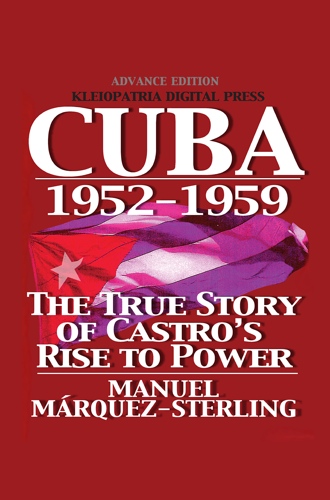March 15, 1958
Mid-March was a time of jubilation for the revolutionaries, and a bleak month for Batista—and the electoralist-constitutionalist opposition.
Castro's strategy was paying off. His terror campaigns backed Batista into a corner where he increasingly had to choose between restricting civil rights (particularly detention and interrogation of terror suspects) or letting the country slide into chaos. And simultaneously, regardless of the course Batista chose, the same climate of terror would preclude the possibility of conducting political campaigns or holding the scheduled elections. And the long in planning General Strike threatened to paralyze the island.
Confident that his victory in April was inevitable, Castro tightened cooperation with Cuba’s Communist Party (PSP) even as he rebuffed and distanced himself from the Church and its peace initiative. He engaged the Cuban Communist Party in his grand strike plan, and they pledged their support in March.
Multiple Castro initiatives converged this month to severely impair Batista’s capacity to maintain the climate conducive to free elections negotiated with the electoralists as their sine qua non conditions for participating in elections. These subversive initiatives included:
- Greatly increased terrorism, aiming at destroying the economy (Sugar harvest focus)
- Opening Sierra Cristal Front which would focus on new forms of terror, and terror against US citizens and interests
- Enrollment of members of the judiciary in publicly opposing the government
- Enrollment of the “non-partisan” Civic Associations Organization in calling for Batista’s resignation and supporting M-26-7 proposals
- Success in lobbying US (through press, congressional, and State Department sympathizers) to impose arms embargo on Cuban government, progressively withdrawing support from Batista
- Impeding the scheduled June elections
Tactics against political rivals included intimidation of opponents and aggressive efforts to discredit them by painting those who sought elections as Batistianos (Batista supporters), and even claiming that they were receiving payoffs from the government.
The March successes of Castro’s tactics brought joy to the revolutionaries and sorrow to the constitutionalists. Carlos Márquez-Sterling response was “This is what we wanted to avoid at all costs. Our work has just become much more difficult.”
For the electoralist-constitutionalist opposition to Batista, the already enormous challenge of crafting and achieving a political solution threatened to become insurmountable as the national political climate was poisoned to the point that violence threatened to become the only way to settle differences. And the damage done to Cuba’s democratic institutions left them increasingly vulnerable to being overrun by a totalitarian tyrant.
based on Manuel Márquez-Sterling's Cuba 1952-1959 and
Cuba 1952-1959 Interactive Timeline
Cuba 1952-1959 Interactive Timeline


 Mobile subscription
Mobile subscription



No comments:
Post a Comment